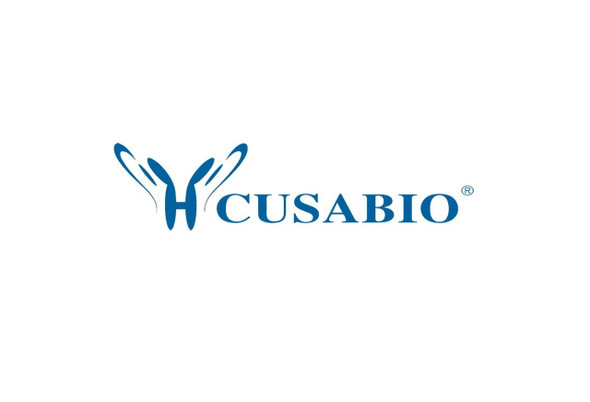Cusabio Rabies virus Recombinants
Recombinant Rabies virus Nucleoprotein (N) | CSB-EP325815RAJ
- SKU:
- CSB-EP325815RAJ
- Availability:
- 3 - 7 Working Days
Description
Recombinant Rabies virus Nucleoprotein (N) | CSB-EP325815RAJ | Cusabio
Alternative Name(s): Nucleocapsid protein (Protein N) (NP)
Gene Names: N
Research Areas: Signal Transduction
Organism: Rabies virus(strain SAD B19)(RABV)
AA Sequence: MDADKIVFKVNNQVVSLKPEIIVDQYEYKYPAIKDLKKPCITLGKAPDLNKAYKSVLSGMSAAKLNPDDVCSYLAAAMQFFEGTCPEDWTSYGIVIARKGDKITPGSLVEIKRTDVEGNWALTGGMELTRDPTVPEHASLVGLLLSLYRLSKISGQNTGNYKTNIADRIEQIFETAPFVKIVEHHTLMTTHKMCANWSTIPNFRFLAGTYDMFFSRIEHLYSAIRVGTVVTAYEDCSGLVSFTGFIKQINLTAREAILYFFHKNFEEEIRRMFEPGQETAVPHSYFIHFRSLGLSGKSPYSSNAVGHVFNLIHFVGCYMGQVRSLNATVIAACAPHEMSVLGGYLGEEFFGKGTFERRFFRDEKELQEYEAAELTKTDVALADDGTVNSDDEDYFSGETRSPEAVYTRIMMNGGRLKRSHIRRYVSVSSNHQARPNSFAEFLNKTYSSDS
Source: E.coli
Tag Info: N-terminal 6xHis-tagged
Expression Region: 1-450aa
Sequence Info: Full Length
MW: 54.7 kDa
Purity: Greater than 85% as determined by SDS-PAGE.
Relevance: Encapsidates the genome in a ratio of one protein N per nine ribonucleotides, protecting it from nucleases. If expressed without protein P it binds non-specifically RNA and therefore can bind it's own mRNA. Interaction with protein P abolishes any non-specific RNA binding, and prevents phosphorylation. The soluble N-P complex encapsidates specifically the genomic RNA, with protein N protecting the genome like a pearl necklace. The encapsidated genomic RNA is termed the nucleocapsid and serves as template for viral transcription and replication. Protein N binds protein P in the NC through a different interaction, and can be phosphorylated. Subsequent viral replication is dependent on intracellular concentration of newly synthesized protein N. During replication, encapsidation by protein N is coupled to RNA synthesis and all replicative products are resistant to nucleases.
Reference: "Complete nucleotide sequencing of SAD derivatives of attenuated rabies virus vaccine strains." Geue L., Schares S., Schnick C., Kliemt J., Beckert A., Hoffmann B., Freuling C., Marston D., McElhinney L., Fooks A., Zanoni R., Peterhans E., Cox J.H., Mueller T. Submitted (JAN-2007)
Storage: The shelf life is related to many factors, storage state, buffer ingredients, storage temperature and the stability of the protein itself. Generally, the shelf life of liquid form is 6 months at -20?/-80?. The shelf life of lyophilized form is 12 months at -20?/-80?.
Notes: Repeated freezing and thawing is not recommended. Store working aliquots at 4? for up to one week.
Function:
Involvement in disease:
Subcellular Location:
Protein Families:
Tissue Specificity:
Paythway:
Form: Liquid or Lyophilized powder
Buffer: If the delivery form is liquid, the default storage buffer is Tris/PBS-based buffer, 5%-50% glycerol. If the delivery form is lyophilized powder, the buffer before lyophilization is Tris/PBS-based buffer, 6% Trehalose, pH 8.0.
Reconstitution: We recommend that this vial be briefly centrifuged prior to opening to bring the contents to the bottom. Please reconstitute protein in deionized sterile water to a concentration of 0.1-1.0 mg/mL.We recommend to add 5-50% of glycerol (final concentration) and aliquot for long-term storage at -20?/-80?. Our default final concentration of glycerol is 50%. Customers could use it as reference.
Uniprot ID: P16285
HGNC Database Link: N/A
UniGene Database Link: N/A
KEGG Database Link: N/A
STRING Database Link: N/A
OMIM Database Link: N/A






